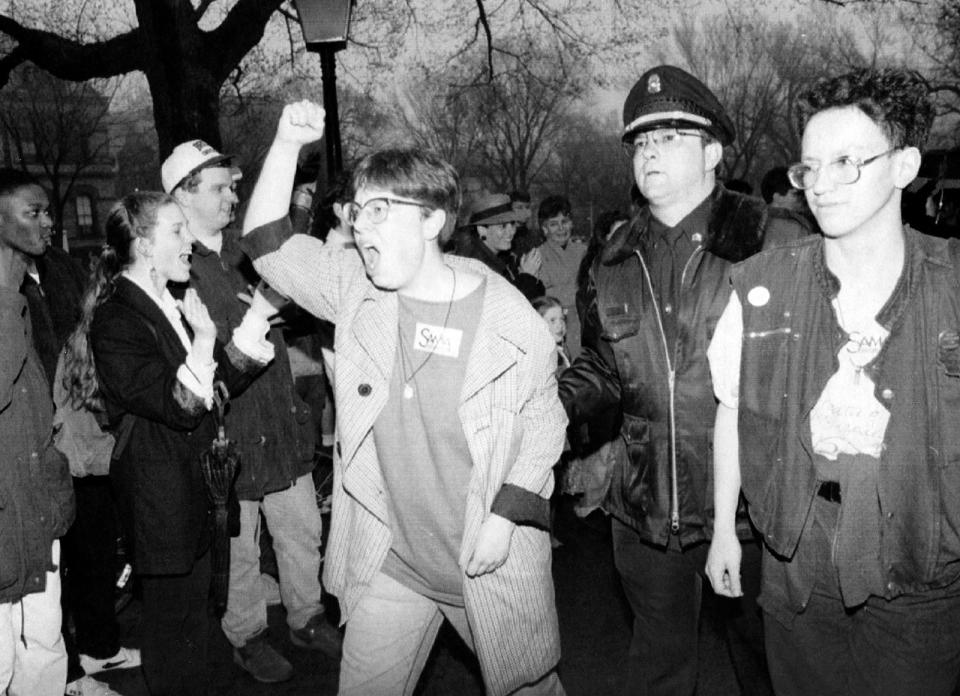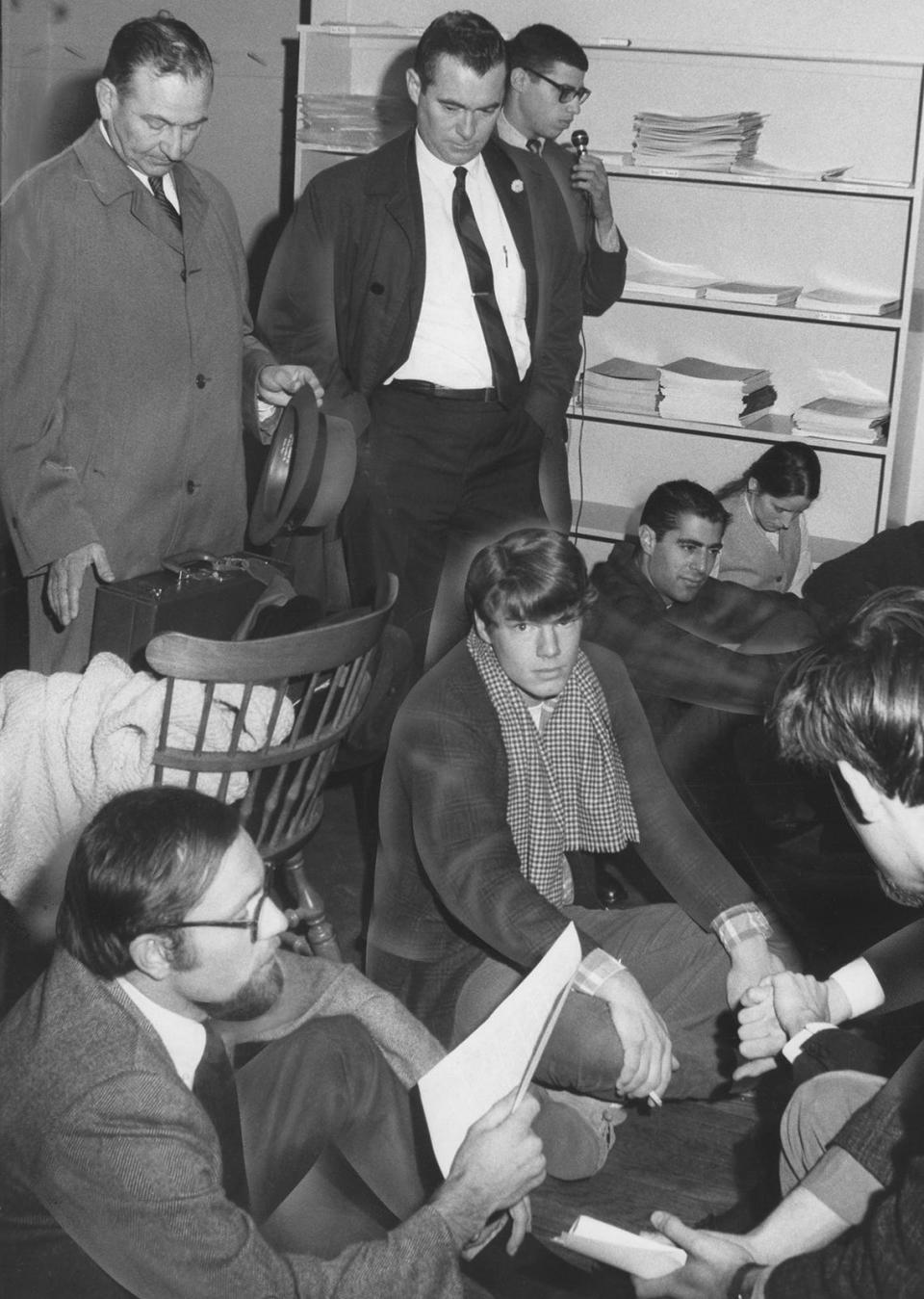Brown University celebrates legacy of activism, but today's protesters feel ignored
PROVIDENCE - Rafi Ash was preparing for court when he got word that trespassing charges against him and his friends had been dropped. It was just after Thanksgiving. It was also just after one of his fellow students at Brown University, Hisham Awartani, was shot and paralyzed by a gunman in Vermont who also injured two other men of Palestinian descent.
"I think it’s really horrifying to say the only reason [Brown President Christina Paxson] changed her mind happened after the violence against a community member," Ash said.
Brown has struggled publicly in its handling of campus upheaval over the Israel-Hamas war, as have other elite schools attempting to find middle ground between students supporting Israel and students condemning its violence against Gaza's civilians.
Ash himself fell into that middle. As a member of BrownU Jews for Ceasefire Now, he was one of 20 Jewish students who protested peacefully in University Hall on an early November night when each was removed and charged with trespassing. They called not only for a cease-fire but for the school to divest from weapons manufacturers as the war rages on.
Ash said he and his colleagues were the first students to be arrested while protesting on campus in 30 years.
Was it worth it? For Ash, yes.
"The harm done in taking this action is incomparable to the harm done by staying silent," he said.
More: Hundreds of Brown U faculty call on university to drop charges against student protesters
Brown has been home to decades of activism – and consequences for participants
Brown's administration was widely criticized for having student protesters arrested. Not only were students opposed to the school's response, but more than 200 faculty called on the school to drop the charges. When they were dropped, Brown released a lengthy, complex statement reflecting on Awartani's injuries, a history of campus activism and the student body's current divisions.
"We have rarely seen a moment like this across this country that pits members of campus communities against each other," the school said. "These are extraordinary times, and we recognize that."
Despite having directed the arrests to be made, Brown recognizes uprisings of the past, its library documenting them in detail. The university calls it "part of the multi-dimensional fabric" on campus, and says protests "exemplify the humanitarian spirit at the core of the Brown community."

That's a different tone from the one Brown took when it apprehended students for trespassing.
"I think the Brown administration often likes activism of the past a lot more than activism of the present," Ash said. "Right now, there are library exhibits about students who sat in for divestment from South Africa ... in the 1980s."
Ash predicted that one day Brown's pro-Palestine activists would be applauded, too.
More: Brown student activists, seeking divestment, arrested at sit-in. What we know
University Hall has seen hundreds of arrests in the past. Why?
Look through Brown's archives and the recent sit-in at University Hall is perhaps among the tamest actions to occur there. Twice the area was taken over by students, first in 1975 for nearly two days in response to a lack of minority student and faculty recruitment, and then again in 1992 to call for need-blind admissions. More than 250 students were arrested and faced several charges including disorderly conduct. Ultimately, they had to pay fines. Eleven years later, the university heeded their call, establishing a policy of admitting students regardless of their financial situation. But according to the university, that "was not fully practiced until 2007."
Other movements of note include the 1967 anti-CIA student protests, a 1968 walkout by Black students, who overall represented only 2% of the student body, and a 1970 school-wide strike opposing the expansion of the Vietnam War into Cambodia. The strike became regional, and Brown was the designated strike center for colleges across the state as well as those in Maine, Vermont and New Hampshire.
Activism took center stage again in 1984 when students passed a referendum calling on the school to stock "suicide pills" in case of nuclear war, prompting discussions on ethics and the impact of weapons of mass destruction. The following year, women's safety became a focal point as 250 female students held a march to Wriston Quad protesting sexual assault and harassment on campus.
Politics on American campuses today are 'supercharged,' lawyer says
Zach Greenberg, a senior program officer at the Foundation for Individual Rights and Expression, or FIRE, said today's environment on American campuses is "supercharged."
The nonprofit civil liberties organization, which was established in 1999 to defend free speech in higher education, vowed last year to spend millions of dollars promoting First Amendment cases.
Each year, FIRE receives between 3,000 and 4,000 case submissions from students taking issue with their school's handling of free speech. Yet Greenberg thinks 2023 may be a record year.

While many such cases never go to court, FIRE writes to universities, releases information to the public and uses its legal network to provide lawyers if necessary.
"At a university that promises free speech … students should fear no consequences from the institution for exercising these rights," Greenberg said.
Owen Dahlkamp, a sophomore who writes for the Brown Daily Herald, has examined the university's protest movements. Despite activism having brought change in the past, when it comes to Israel and Palestine, Dahlkamp said not all students are convinced the administration is hearing them.
"One thing the university has said time and again is they are committed to engaging in meaningful dialogue with students with different viewpoints," Dahlkamp said, adding, "Some student activists have said they have not felt that has been the case."
This article originally appeared on The Providence Journal: Arrests, takeovers and strikes: Brown's long history of political activism
